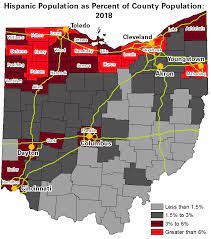
This article was posted on Fox News on February 10th and covers the progress made in January by Bidens new border measures. In the month of January there were more than 156,000 migrant encounters. The Biden administration claimed that this statistic showed progress in new border measures introduced last month, despite the number being slightly higher than it was last January and drastically higher than in 2021. Even with the number being higher than the past two previous years, the 156,000 encounters in January were a large drop from the December number of over 251,000. The January number of encounters for people trying to enter the border illegally was also the lowest it has been since February of 2021. The Biden administration is using these numbers to show that the border measure introduced in December, including the expansion of a humanitarian parole program for Venezuelans introduced last year to include Nicaraguans, Cubans and Haitians, is working and improving situations at border. Although the CPB backs the Biden Administration and agrees that the policies are working, The Biden administration has faced severe backlash. Both Republicans and Democrats attacked these new border measures. Despite facing backlash from both sides Biden called for help from Congress in his State of the Union Address, asking for Congress to pass parts of his immigration bill.
This Immigration article covers multiple different sides of the topic. Its general idea is providing information on the progress made by Biden border measures in the month of January. It provides the real numbers for immigration encounters in the month of January and compares it to multiple other months and years, while also providing views on the border measures from both parties. It also included words from Bidens State of the Union Address to show his ideas relating to the future of the border and these border measures. The journalist starts off the article by painting Biden and the number of encounters in a negative light. The journalist compares the January numbers to previous numbers that make it seem as though the claims of progress are false. The journalist does put some positivity on the numbers by providing quotes from the CPB that show that the numbers are in fact some sort of progress. However, the article seems to have more of a focus on the negative’s sides of these measures than the positives. As they also include ideas from both parties lashing out against Bidens border measures. Overall, the article has a more negative tone and seems to be against the border measures, however, it does seem as though there is an effort to be neutral.
In this article the journalist provides a large amount of quantitative data. The journalist includes the numbers for migrant encounters in multiple months in multiple years. The journalist doesn’t provide any other forms of data besides these numbers. However, the data is used in an efficient way to provide information to the reader. The journalist uses the data together in order to compare it and give accurate representations of the January numbers against the numbers of other months in the past, as well as put the actual numbers against the claims of the Biden administration. The writer does not follow all of the Purdue Owl rules for writing statistics. For example, they do not include charts or graphs when providing their numbers.
The primary qualitative evidence used in this article was quotes and statements made by the CPB, and Joe Biden. The quotes from the CPB were used to back the claims by the Biden administration that the border measures were working and lowering the number of encounters. The author also included a statement of an official who opposed Bidens border measures. This statement provided actually evidence to a claim made by the author that these border measures are widely opposed. Finally, the journalist included quotes from Joe Bidens recent address in order to provide information on his hopes for the future of the Border.
The author provides some sources of evidence in the numbers of migrant encounters, but that is it. Aside from those numbers there is no quantitative data. Considering the topic, providing more quantitative data would have been better in my opinion. Including charts and graphs could have better depicted the numbers and gave a clearer example. The qualitative evidence paired with the quantitative evidence that is provided does do a good job of highlighting the key ideas of the article and providing decent evidence. The key ideas of the article have strong relations to the class. The article provides information on immigration policies and the effectiveness of these policies. These ideas and the numbers provided could relate to ideas from throughout history as well as the numbers from throughout history.
